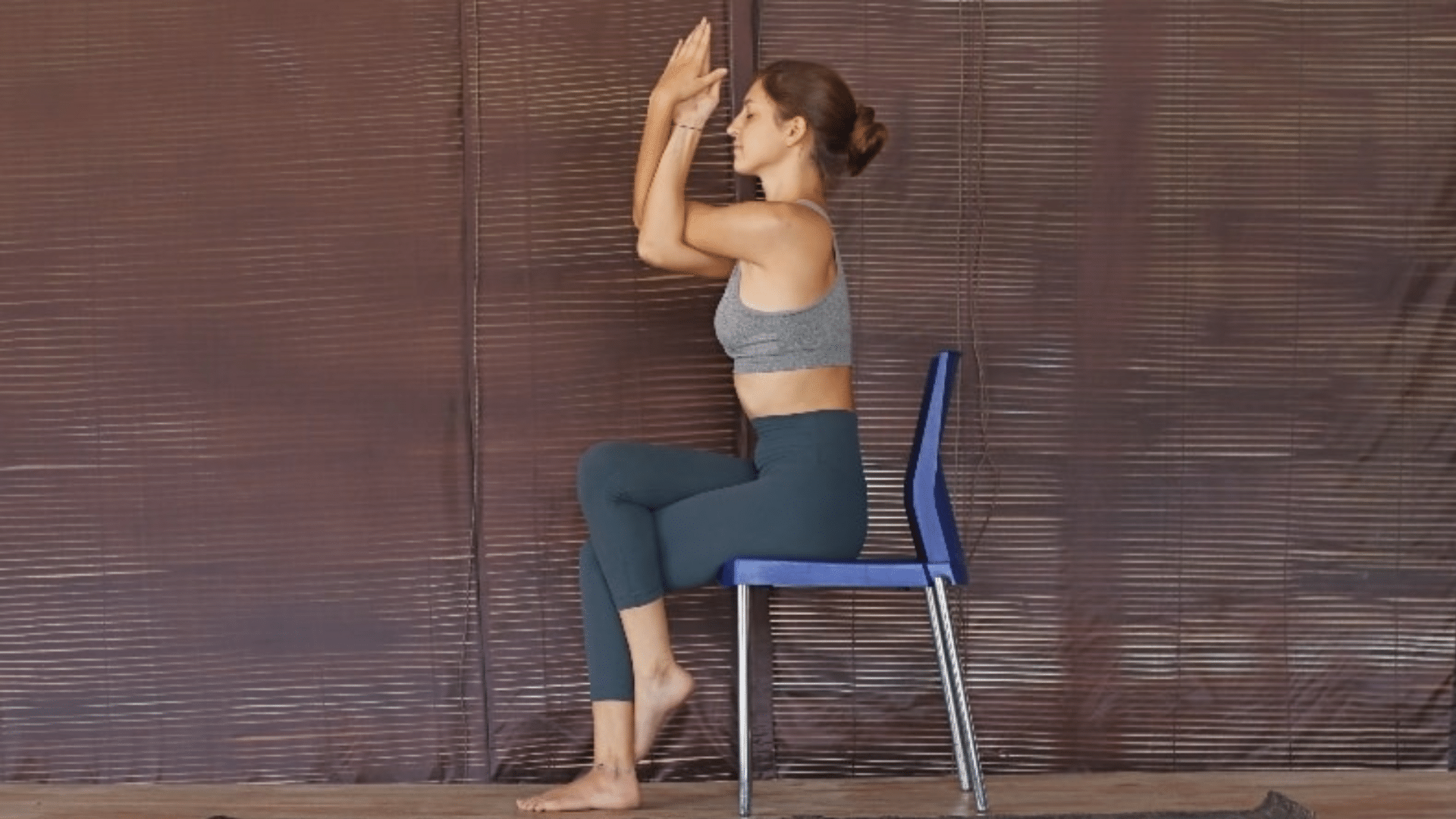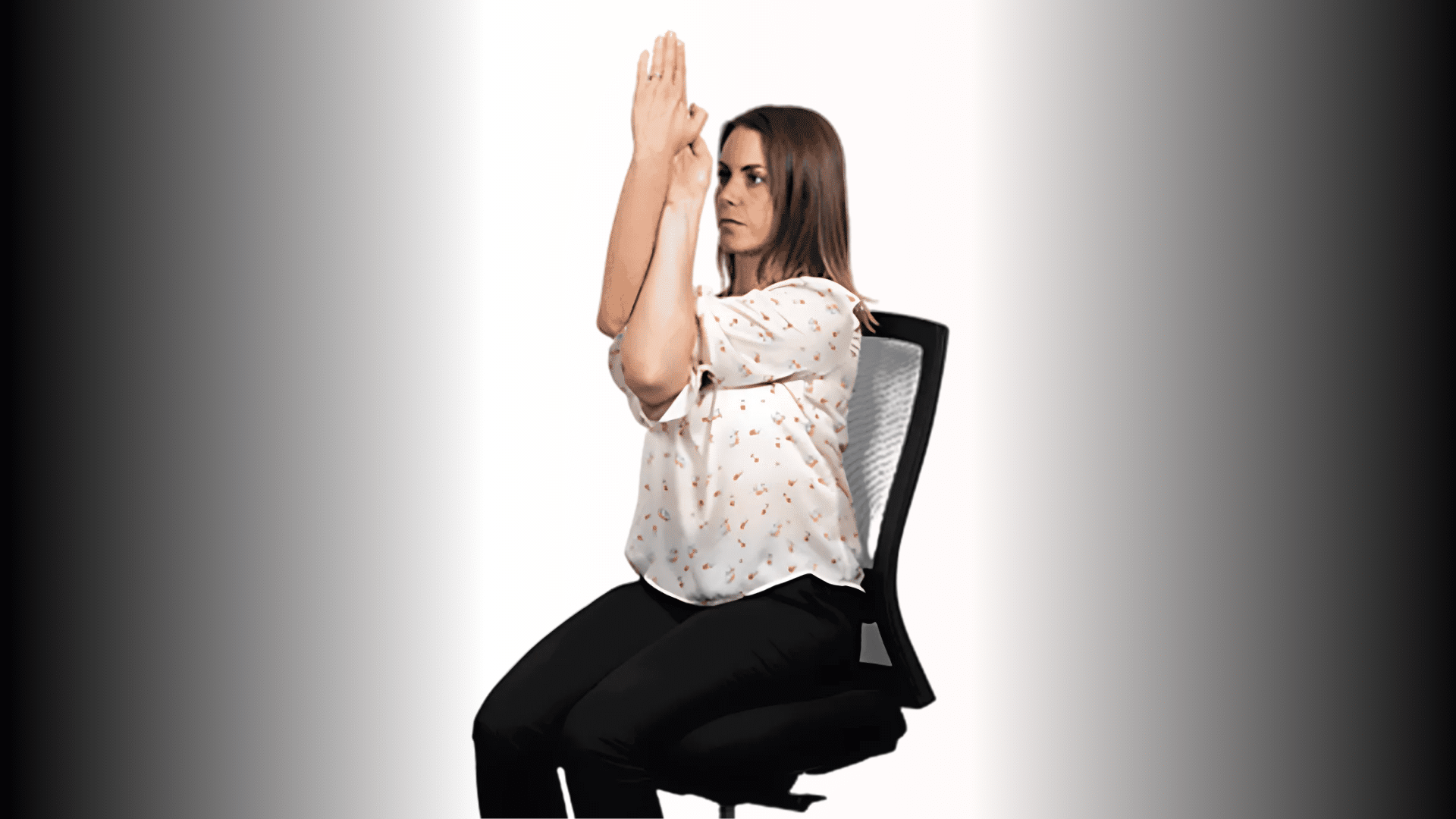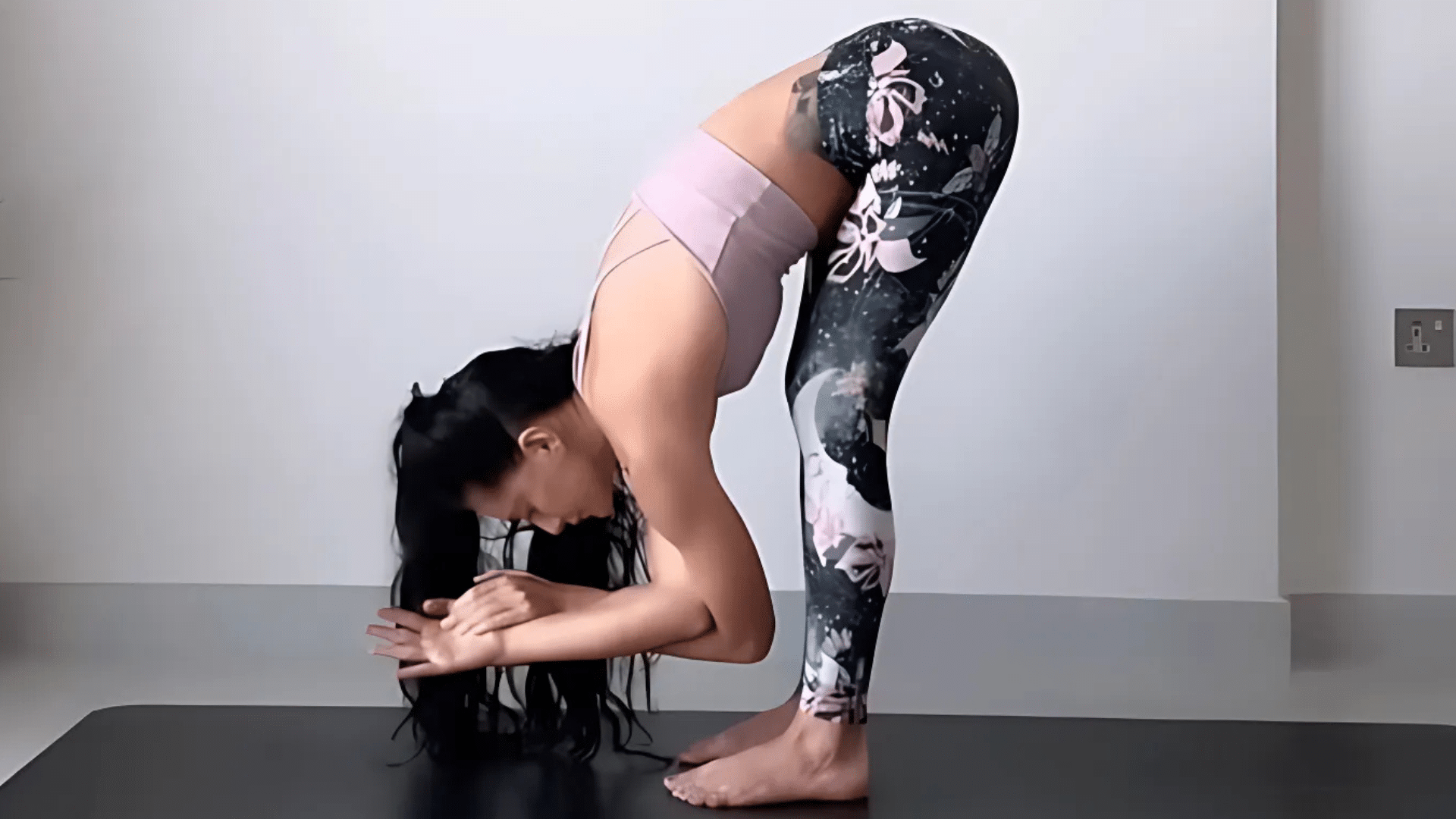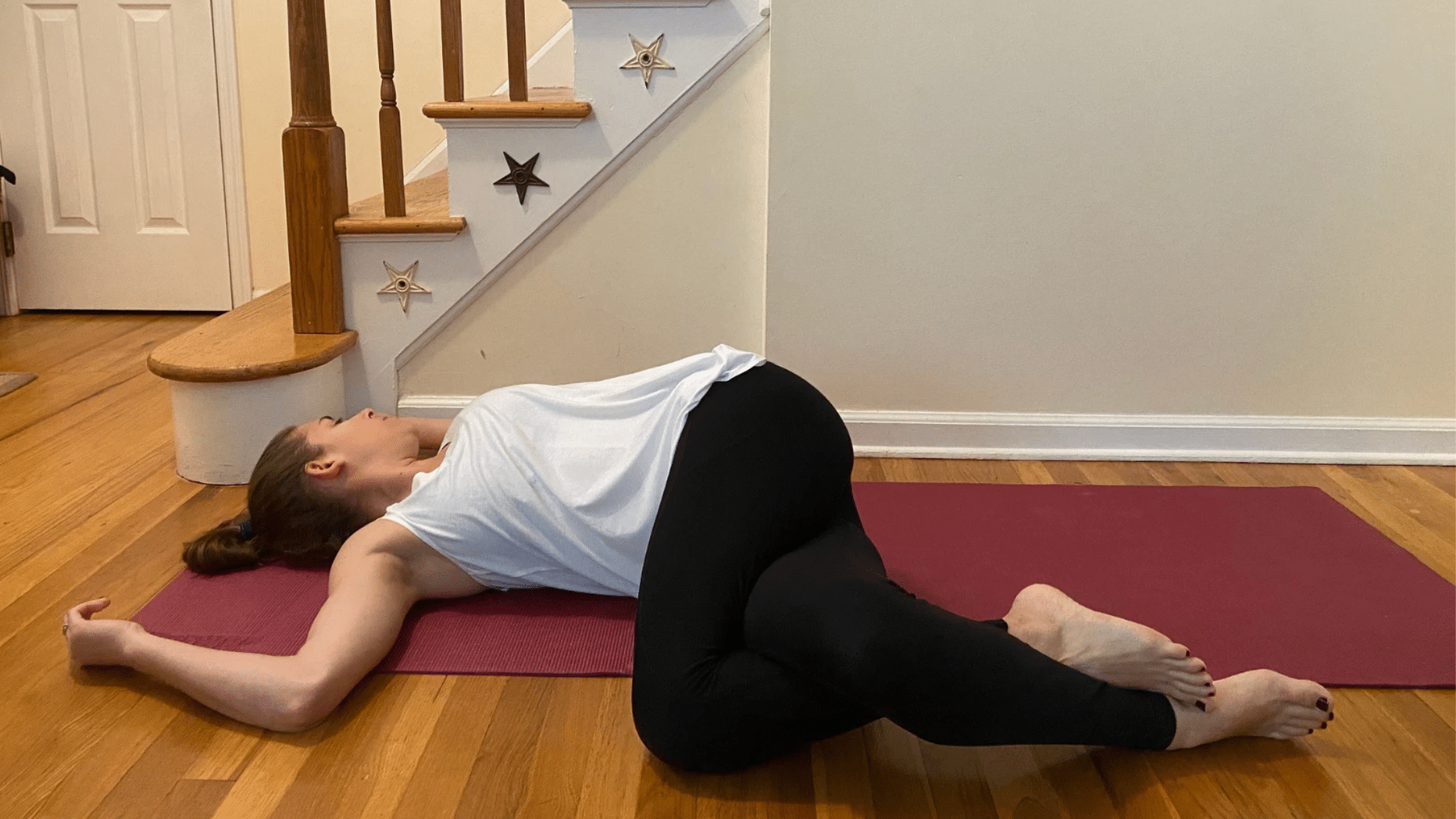Have you ever felt your shoulders or hips locked up and just wanted a stretch that actually helps? I felt the same way until I tried Eagle Pose yoga. Once I learned it, I noticed better balance and less tension. It also gave me a moment to slow down and focus.
Now it’s your turn. If you’ve been curious about eagle pose yoga, this guide will help you. You’ll see what the pose is, how to practice it safely, and what benefits you can expect.
You don’t need to be an expert or super flexible. By the end, you’ll know how to use this pose in your routine to feel stronger, calmer, and more open.
Understanding Eagle Pose
Eagle Pose, also known as Garudasana, is a standing balance posture in yoga. It challenges your focus, balance, and coordination by wrapping your arms and legs around each other while staying grounded on one leg.
The pose stretches your shoulders and hips, strengthens your legs, and builds concentration. Its name comes from Garuda, the mighty eagle in Hindu mythology who served as the vehicle of Lord Vishnu.
Garuda symbolizes strength, courage, and the ability to rise above obstacles. Practicing this pose not only supports physical stability but also encourages mental clarity and inner steadiness in your yoga practice.
Step-by-Step Guide to Eagle Pose Yoga
Learn Eagle Pose by breaking it into clear, simple steps with proper alignment, balance tips, and mindful breathing techniques. Here is how to start:
Step 1: Starting Position (Mountain Pose)

Begin standing tall in Mountain Pose with feet hip-width apart. Bend your knees slightly and ground evenly through all four corners of your feet.
Reach fingertips forward to wake up the legs and shoulders, then draw awareness to your core. This prepares your foundation before moving into the wrapping motions of Eagle Pose.
Step 2: Leg Positioning

From a soft squat, shift weight onto one foot. Cross the opposite thigh over, resting toes on the floor for balance. Beginners can stay here, working on hip alignment.
With more practice, lift and hook the toes behind the calf. Keep hips square and steady, ensuring your standing leg remains strong and engaged throughout.
Step 3: Arm Wrapping

Extend arms forward, then drop one elbow under the other, creating a hooked “V” shape. Keep your shoulders down and away from your ears as you lift your fingertips upward.
If possible, continue wrapping until palms touch, but avoid forcing the shape. The key is balancing shoulder alignment with a steady lift through the chest and sternum.
Step 4: Alignment & Gaze

Maintain square hips and level shoulders, avoiding forward tilts or twists. Imagine gently pulling the hip crease down while keeping the standing foot rooted.
Lengthen the spine upward as your tailbone drops down. Find a soft gaze past the nose (Drishti). This balance of grounding and lifting allows the pose to feel both strong and light.
Step 5: Breath and Hold Duration

Breathe deeply into the belly, using each inhale to lift the chest and each exhale to ground the shoulders and hips. Hold the pose for 5–10 breaths, focusing on stability rather than perfection.
Stay mindful, adjusting as needed, and remember to release slowly before repeating on the opposite side for balanced practice.
For more clarification, watch the full video here:
Variations of Eagle Pose
Study different ways to practice Eagle Pose, from beginner-friendly modifications to advanced variations, making the posture accessible and challenging.
Beginner-Friendly Modifications
These variations make Eagle Pose accessible for beginners, helping you build strength and flexibility while avoiding strain or frustration:
1. Seated Eagle (Chair Yoga)

Sit upright in a sturdy chair with feet flat. Cross one thigh over the other while keeping balance supported. Wrap your arms into Eagle position, lifting elbows slightly.
This version reduces pressure on knees and ankles, making it ideal for seniors, beginners, or anyone needing a gentler way to experience Eagle Pose’s benefits.
2. Using a Wall or Block for Balance

Stand beside a wall or place a yoga block under your toes for stability. Cross your legs and arms into Eagle while lightly pressing against the wall or resting the lifted foot on the block.
This support allows you to focus on hip alignment and upper body engagement without worrying about falling out of balance.
3. Desk-Worker Stretches (Eagle Arms Only)

Sit at your desk with both feet flat on the floor. Extend your arms, then cross one elbow under the other and wrap them into Eagle arms.
Lift elbows gently to stretch shoulders and upper back. This simple modification helps relieve tension from long hours of sitting, offering an easy way to reset posture anytime.
Advanced Variations
These advanced Eagle Pose variations deepen balance, strength, and flexibility while keeping your practice creative and more challenging:
4. Forward-Fold Eagle

From full Eagle Pose, hinge forward at the hips while keeping arms and legs wrapped. Maintain a strong standing leg and controlled breath.
This deepens the stretch in your hips, shoulders, and upper back while testing balance, making it an excellent progression once you’ve mastered the traditional version.
5. Eagle Arms in Warrior or Airplane

Add Eagle arms while holding Warrior I, Warrior III, or Airplane Pose. This variation strengthens legs and improves stability while opening the shoulders.
Combining balancing postures with Eagle arms intensifies focus and concentration, creating a flowing, integrated challenge for both the upper and lower body in your yoga practice.
6. Reclined Eagle Twist

Lie on your back and wrap your legs into Eagle. Drop them gently to one side while extending arms in a T-shape.
This reclined twist relieves lower back tension and opens the outer hips, while maintaining the therapeutic stretch of Eagle Pose in a more restorative, floor-based variation.
Eagle Pose Anatomy and Alignment
In Eagle Pose, several key muscles work together. The glutes and quads support your standing leg, keeping it strong and stable.
The shoulders and upper back engage as your arms wrap, stretching and strengthening simultaneously.
A common mistake is allowing the pelvis to tilt forward, the chest to collapse, or wobbling off balance.
To correct this, focus on keeping a neutral spine, gently drawing the tailbone down, lifting through the sternum, and grounding evenly through the standing foot.
These simple cues help you stay aligned, safe, and fully engaged throughout the pose.
Benefits of the Eagle Pose
Eagle Pose builds balance, strength, and focus while stretching shoulders and hips, offering both physical and mental benefits.
- Improves balance and coordination: Strengthens stabilizing muscles while enhancing body awareness.
- Stretches shoulders, hips, and upper back: Relieves tightness from sitting or repetitive movements.
- Strengthens legs and ankles: Builds stability and endurance in the lower body.
- Opens chest and improves posture: Encourages upright alignment and deeper breathing.
- Promotes focus and concentration: Requires mindfulness and mental clarity to maintain the pose.
Safety Precautions and Injury Prevention
Eagle Pose is powerful, but it requires mindfulness to stay safe. Avoid the pose if you have recent or chronic knee, ankle, or shoulder injuries, since the wrapping motion adds stress to these joints.
Pregnant practitioners and those with high blood pressure should practice modified versions or skip the pose entirely.
Be extra cautious in hot yoga classes, as heat can create a false sense of flexibility, increasing the risk of injury. Always prioritize alignment, use props for support, and never push beyond your comfortable range.
Eagle Pose for Kids and Seniors
Eagle Pose may look a little tricky at first, but it can be both fun and beneficial for both children and older adults. With a few minor adjustments, it works well for individuals of different body types and ages.
For Kids: Fun Storytelling (Fly Like an Eagle)
Step 1: Stand tall, flap arms like wings, and build excitement before crossing arms. This adds playful imagination and engagement.
Step 2: Gently cross your arms and legs, without fully wrapping them. Simple crossing helps children balance without frustration.
Step 3: Hold for a few breaths, pretend to “soar.” Encourages focus while keeping practice lighthearted and fun.
For Seniors: Chair-Based Version, Gentle Holds
Step 1: Sit tall in a sturdy chair with feet grounded. Removes pressure from knees and ankles safely.
Step 2: Cross one thigh over the other while keeping balance steady. Supports hip mobility without straining joints.
Step 3: Wrap your arms into an Eagle position and lift your elbows gently. Relieves shoulder tension with controlled, comfortable movement.
Conclusion
For me, eagle pose yoga has been more than just a stretch. It’s helped me slow down, build focus, and stay strong, both physically and mentally.
I didn’t get it right the first few times, but I kept going, and that made all the difference.
Now it’s your turn. Take what you’ve learned and give it a shot. Start slow. Keep your balance. Breathe. You don’t have to be perfect; just keep showing up.
One last thing: don’t stop here. There’s more you can learn and try. Explore other blogs on the website to continue growing and learning in simple, practical ways!





